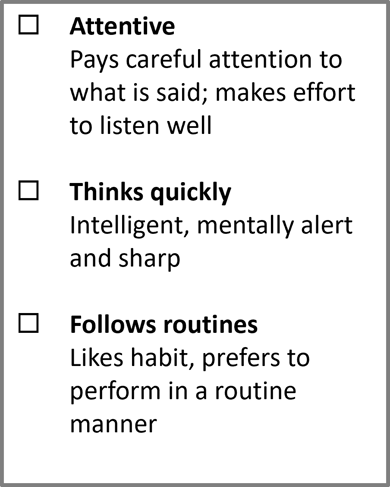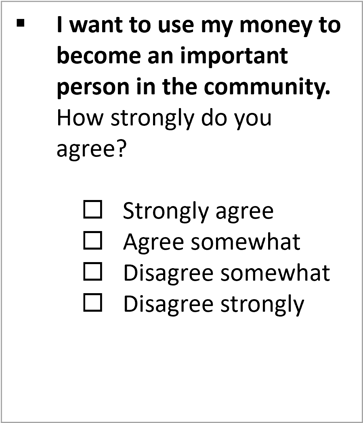The Science Behind the Natural Behavior Discovery
This article applies to those curious about the science behind the Natural Behavior Discovery.
Common Question:
How does Natural Behavior Discovery work?
How many different scores can be generated from the Natural Behavior Discovery?
What is the science behind DNA Natural Behavior Discovery?
Solution Overview:
This article addresses questions about the type of discovery chosen to measure Natural Behavior and the validation and uniqueness of the scores generated by the discovery.
Details
The DNA Natural Behavior Assessment comprises 46 sets of three non-situational items (pairs of phrases) that relate to one of the 8 factors using a forced choice rating (most like, least like) methodology. A total of 138 rating items.
Forced Choice Scoring:
With forced choice, you choose Most Like and Least Like from a triad of words:

The DNA Behavior system uses non-situational phrases that consistently measure specific ingrained behaviors and automatic biases over long periods. The phrases are easy to understand and using a forced choice method makes it difficult to “game” the assessment results. Forced choice discoveries lead to more predictive and consistent measurement.
Forced Choice vs. Traditional Multiple Choice
In traditional Likert scale ranking or multiple choice surveys, results can be inconsistent.

With this type of question, long-term predictability and reliability issues exist inherently, including:
- Responses that change depending on the situation and market events
- Difficult to interpret question that requires interpretation
- Strengths are likely to be overstated and struggles understated by 1 standard deviation
With the Forced Choice model, the DNA Natural Behavior discovery is starting with a greater level of long-term reliability and depth than standard situational-based systems that measure learned behavior as it relates to situations.
Independent validation work using established psychometric methodologies performed by industrial psychologists from Georgia Tech University, and other independent psychologists with a total of more than 100 years of relevant experience.
The responses to the 46 questions (138 rating items) produce 2,349,060 scoring combinations.
The number of unique reports of T Score combinations is 3,704,945,600,000,000,512,144,136.
Still Need Help?
Submit a ticket here.
![DNA-B-Primary_White (7).png]](https://kb.dnabehavior.com/hs-fs/hubfs/DNA-B-Primary_White%20(7).png?height=50&name=DNA-B-Primary_White%20(7).png)